#WomenatNASA
Text
Women in Exploration: From Human Computers to All-Woman Spacewalks

Since the 19th century, women have been making strides in areas like coding, computing, programming and space travel, despite the challenges they have faced. Sally Ride joined NASA in 1983 and five years later she became the first female American astronaut. Ride's accomplishments paved the way for the dozens of other women who became astronauts, and the hundreds of thousands more who pursued careers in science and technology. Just last week, we celebrated our very first #AllWomanSpacewalk with astronauts Christina Koch and Jessica Meir.
Here are just a couple of examples of pioneers who brought us to where we are today:
The Conquest of the Sound Barrier

Pearl Young was hired in 1922 by the National Advisory Committee for Aeronautics (NACA), NASA’s predecessor organization, to work at its Langley site in support in instrumentation, as one of the first women hired by the new agency. Women were also involved with the NACA at the Muroc site in California (now Armstrong Flight Research Center) to support flight research on advanced, high-speed aircraft. These women worked on the X-1 project, which became the first airplane to fly faster than the speed of sound.
Young was the first woman hired as a technical employee and the second female physicist working for the federal government.
The Human Computers of Langley

The NACA hired five women in 1935 to form its first “computer pool”, because they were hardworking, “meticulous” and inexpensive. After the United States entered World War II, the NACA began actively recruiting similar types to meet the workload. These women did all the mathematical calculations – by hand – that desktop and mainframe computers do today.
Computers played a role in major projects ranging from World War II aircraft testing to transonic and supersonic flight research and the early space program. Women working as computers at Langley found that the job offered both challenges and opportunities. With limited options for promotion, computers had to prove that women could successfully do the work and then seek out their own opportunities for advancement.
Revolutionizing X-ray Astronomy
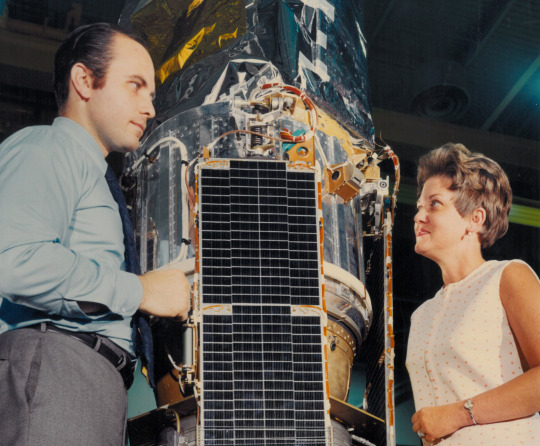
Marjorie Townsend was blazing trails from a very young age. She started college at age 15 and became the first woman to earn an engineering degree from the George Washington University when she graduated in 1951. At NASA, she became the first female spacecraft project manager, overseeing the development and 1970 launch of the UHURU satellite. The first satellite dedicated to x-ray astronomy, UHURU detected, surveyed and mapped celestial X-ray sources and gamma-ray emissions.
Women of Apollo
NASA’s mission to land a human on the Moon for the very first time took hundreds of thousands workers. These are some of the stories of the women who made our recent #Apollo50th anniversary possible:
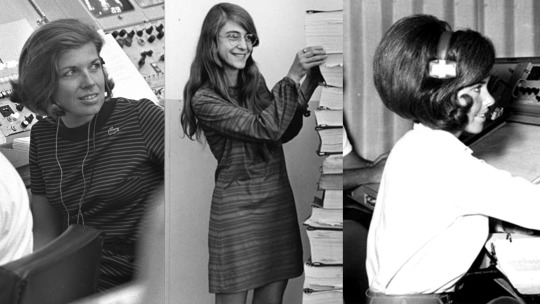
• Margaret Hamilton led a NASA team of software engineers at the Massachusetts Institute of Technology and helped develop the flight software for NASA’s Apollo missions. She also coined the term “software engineering.” Her team’s groundbreaking work was perfect; there were no software glitches or bugs during the crewed Apollo missions.
• JoAnn Morgan was the only woman working in Mission Control when the Apollo 11 mission launched. She later accomplished many NASA “firsts” for women: NASA winner of a Sloan Fellowship, division chief, senior executive at the Kennedy Space Center and director of Safety and Mission Assurance at the agency.
• Judy Sullivan, was the first female engineer in the agency’s Spacecraft Operations organization, was the lead engineer for health and safety for Apollo 11, and the only woman helping Neil Armstrong suit up for flight.
Hidden Figures
Author Margot Lee Shetterly’s book – and subsequent movie – Hidden Figures, highlighted African-American women who provided instrumental support to the Apollo program, all behind the scenes.
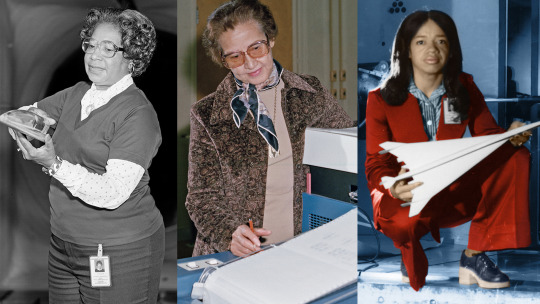
• An alumna of the Langley computing pool, Mary Jackson was hired as the agency’s first African-American female engineer in 1958. She specialized in boundary layer effects on aerospace vehicles at supersonic speeds.
• An extraordinarily gifted student, Katherine Johnson skipped several grades and attended high school at age 13 on the campus of a historically black college. Johnson calculated trajectories, launch windows and emergency backup return paths for many flights, including Apollo 11.
• Christine Darden served as a “computress” for eight years until she approached her supervisor to ask why men, with the same educational background as her (a master of science in applied mathematics), were being hired as engineers. Impressed by her skills, her supervisor transferred her to the engineering section, where she was one of few female aerospace engineers at NASA Langley during that time.
Lovelace’s Woman in Space Program
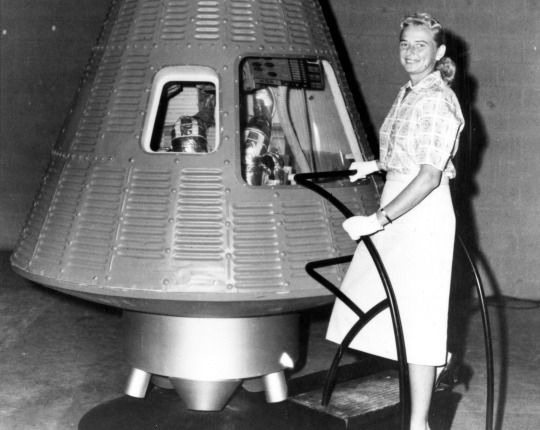
Geraldyn “Jerrie” Cobb was the among dozens of women recruited in 1960 by Dr. William Randolph "Randy" Lovelace II to undergo the same physical testing regimen used to help select NASA’s first astronauts as part of his privately funded Woman in Space Program.
Ultimately, thirteen women passed the same physical examinations that the Lovelace Foundation had developed for NASA’s astronaut selection process. They were: Jerrie Cobb, Myrtle "K" Cagle, Jan Dietrich, Marion Dietrich, Wally Funk, Jean Hixson, Irene Leverton, Sarah Gorelick, Jane B. Hart, Rhea Hurrle, Jerri Sloan, Gene Nora Stumbough, and Bernice Trimble Steadman. Though they were never officially affiliated with NASA, the media gave these women the unofficial nicknames “Fellow Lady Astronaut Trainees” and the “Mercury Thirteen.”
The First Woman on the Moon

The early space program inspired a generation of scientists and engineers. Now, as we embark on our Artemis program to return humanity to the lunar surface by 2024, we have the opportunity to inspire a whole new generation. The prospect of sending the first woman to the Moon is an opportunity to influence the next age of women explorers and achievers.
This material was adapted from a paper written by Shanessa Jackson (Stellar Solutions, Inc.), Dr. Patricia Knezek (NASA), Mrs. Denise Silimon-Hill (Stellar Solutions), and Ms. Alexandra Cross (Stellar Solutions) and submitted to the 2019 International Astronautical Congress (IAC). For more information about IAC and how you can get involved, click here.
Make sure to follow us on Tumblr for your regular dose of space: http://nasa.tumblr.com
#womeninSTEM#WomenatNASA#WomenofNASA#space#NASA#universe#solar system#iac2019#Artemis#apollo 11#Apollo 50th#astronauts#allwomanspacewalk#womeninspace#aerospace#aerospace engineering#flight#spaceflight#Human spaceflight#stem#satellite#hidden figures
3K notes
·
View notes
Photo

Sisters are doing it for themselves! Congratulations to Christina Koch and Jessica Meir on the first all-woman spacewalk! Here’s to many more 🥂 #iss #spacewalk #womenatnasa https://www.instagram.com/p/B3wx5xWJfwT/?igshid=a5n7jrvak7vd
1 note
·
View note
Text
The stars aligned for #NationalSTEMDay to coincide with NASA in Silicon Valley Live!At 7pm ET, tune in to @Twitch to meet some brilliant #WomenAtNASA working at @NASAAmes who are contributing to our mission of space exploration: https://go.nasa.gov/2qCeYQr pic.twitter.com/eN2q7VjsDS
The stars aligned for #NationalSTEMDay to coincide with NASA in Silicon Valley Live!



At 7pm ET, tune in to @Twitch to meet some brilliant #WomenAtNASA working at @NASAAmes who are contributing to our mission of space exploration: https://go.nasa.gov/2qCeYQr pic.twitter.com/eN2q7VjsDS

from Ricky Schneiderus Curation https://twitter.com/NASA/status/1060668540771057667
0 notes
Text
Celebrating Women’s Equality Day Across NASA

August 26 is celebrated in the United States as Women’s Equality Day. On this day in 1920, the Nineteenth Amendment was signed into law and American women were granted the constitutional right to vote. The suffragists who fought hard for a woman’s right to vote opened up doors for trailblazers who have helped shape our story of spaceflight, research and discovery. On Women’s Equality Day, we celebrate women at NASA who have broken barriers, challenged stereotypes and paved the way for future generations. This list is by no means exhaustive.
Rocket Girls and the Advent of the Space Age

In the earliest days of space exploration, most calculations for early space missions were done by “human computers,” and most of these computers were women. These women's calculations helped the U.S. launch its first satellite, Explorer 1. This image from 1953, five years before the launch of Explorer 1, shows some of those women on the campus of the Jet Propulsion Laboratory (JPL).
These women were trailblazers at a time when most technical fields were dominated by white men. Janez Lawson (seen in this photo), was the first African American hired into a technical position at JPL. Having graduated from UCLA with a bachelor's degree in chemical engineering, she later went on to have a successful career as a chemical engineer.
Katherine Johnson: A Champion for Women’s Equality

Mathematician Katherine Johnson, whose life story was told in the book and film "Hidden Figures," is 101 years old today! Coincidentally, Johnson’s birthday falls on August 26: which is appropriate, considering all the ways that she has stood for women’s equality at NASA and the country as a whole.
Johnson began her career in 1953 at the National Advisory Committee for Aeronautics (NACA), the agency that preceded NASA, one of a number of African-American women hired to work as "human computers.” Johnson became known for her training in geometry, her leadership and her inquisitive nature; she was the only woman at the time to be pulled from the computing pool to work with engineers on other programs.
Johnson was responsible for calculating the trajectory of the 1961 flight of Alan Shepard, the first American in space, as well as verifying the calculations made by electronic computers of John Glenn’s 1962 launch to orbit and the 1969 Apollo 11 trajectory to the moon. She was awarded the Presidential Medal of Freedom, the nation's highest civilian honor, by President Barack Obama on Nov. 24, 2015.
JoAnn Morgan: Rocket Fuel in Her Blood

JoAnn Morgan was an engineer at Kennedy Space Center at a time when the launch room was crowded with men. In spite of working for all of the Mercury, Gemini and Apollo programs, and being promoted to a senior engineer, Morgan was still not permitted in the firing room at liftoff — until Apollo 11, when her supervisor advocated for her because of her superior communication skills. Because of this, Morgan was the instrumentation controller — and the only woman — in the launch room for the Apollo 11 liftoff.
Morgan’s career at NASA spanned over 45 years, and she continued to break ceiling after ceiling for women involved with the space program. She excelled in many other roles, including deputy of Expendable Launch Vehicles, director of Payload Projects Management and director of Safety and Mission Assurance. She was one of the last two people who verified the space shuttle was ready to launch and the first woman at KSC to serve in an executive position, associate director of the center.
Oceola (Ocie) Hall: An Advocate for NASA Women

Oceola Hall worked in NASA’s Office of Diversity and Equal Opportunity for over 25 years. She was NASA’s first agency-wide Federal Women’s program manager, from 1974 – 1978. Hall advanced opportunities for NASA women in science, engineering and administrative occupations. She was instrumental in initiating education programs for women, including the Simmons College Strategic Leadership for Women Program.
Hall’s outstanding leadership abilities and vast knowledge of equal employment laws culminated in her tenure as deputy associate administrator for Equal Opportunity Programs, a position she held for five years. Hall was one among the first African-American women to be appointed to the senior executive service of NASA. This photo was taken at Marshall during a Federal Women’s Week Luncheon on November 11, 1977 where Hall served as guest speaker.
Hall was known for saying, “You have to earn your wings every day.”
Sally Ride: Setting the Stage for Women in Space
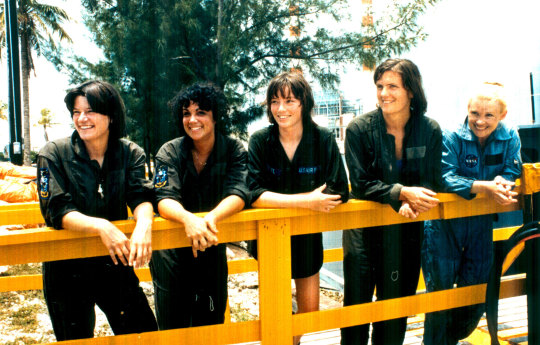
The Astronaut Class of 1978, otherwise known as the “Thirty-Five New Guys,” was NASA’s first new group of astronauts since 1969. This class was notable for many reasons, including having the first African-American and first Asian-American astronauts and the first women.
Among the first women astronauts selected was Sally Ride. On June 18, 1983, Ride became the first American woman in space, when she launched with her four crewmates aboard the Space Shuttle Challenger on mission STS-7. On that day, Ride made history and paved the way for future explorers.
When those first six women joined the astronaut corps in 1978, they made up nearly 10 percent of the active astronaut corps. In the 40 years since that selection, NASA selected its first astronaut candidate class with equal numbers of women and men, and women now comprise 34 percent of the active astronauts at NASA.
Charlie Blackwell-Thompson: First Female Launch Director
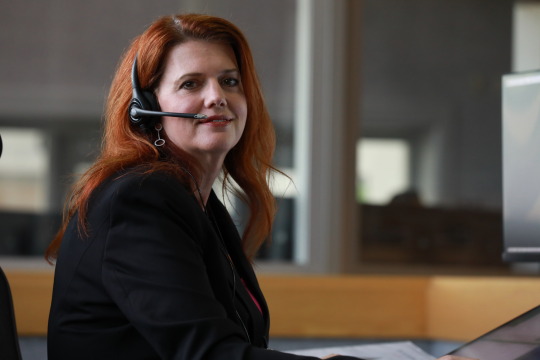
As a part of our Artemis missions to return humans to the Moon and prepare for journeys to Mars, the Space Launch System, or SLS, rocket will carry the Orion spacecraft on an important flight test. Veteran spaceflight engineer Charlie Blackwell-Thompson will helm the launch team at Kennedy Space Center in Florida. Her selection as launch director means she will be the first woman to oversee a NASA liftoff and launch team.
"A couple of firsts here all make me smile," Blackwell-Thompson said. "First launch director for the world's most powerful rocket — that's humbling. And I am honored to be the first female launch director at Kennedy Space Center. So many amazing women that have contributed to human space flight, and they blazed the trail for all of us.”
The Future of Women at NASA
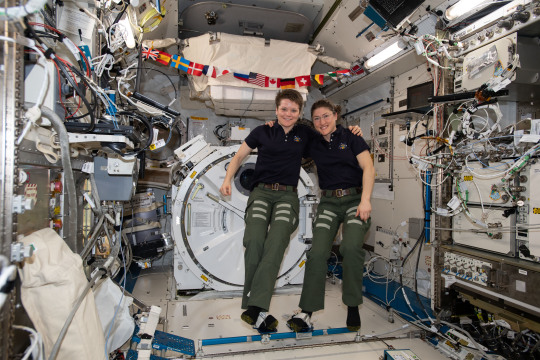
In this image, NASA astronauts Anne McClain and Christina Koch pose for a portrait inside the Kibo laboratory module on the International Space Station. Both Expedition 59 flight engineers are members of NASA's 2013 class of astronauts.
As we move forward as a space agency, embarking on future missions to the Moon, Mars and beyond, we reflect on the women who blazed the trail and broke glass ceilings. Without their perseverance and determination, we would not be where we are today.
youtube
Follow Women@NASA for more stories like this one and make sure to follow us on Tumblr for your regular dose of space: http://nasa.tumblr.com.
#NASA#WomenatNASA#WomenofNASA#womens rights#womensupportingwomen#womeninSTEM#women's equality#space#astronaut#moon#moonlanding#sally ride#hidden figures#computers#space station#women's equality day#Apollo#space shuttle#Universe#human computers
3K notes
·
View notes
Photo
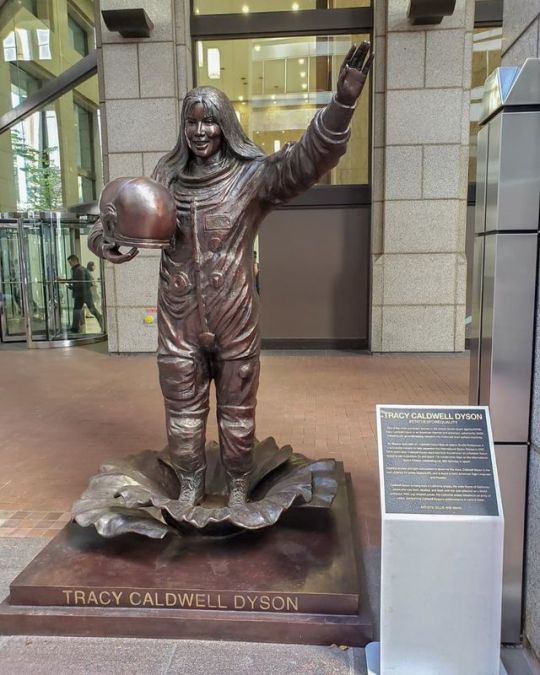
Tracy Caldwell Dyson, chemist and NASA astronaut, was a Mission Specialist on Space Shuttle Endeavour flight STS-118 in August 2007. She was part of the Expedition 24 crew on the International Space Station between April 4, 2010 and September 25, 2010. She has completed three spacewalks, logging more than 22 hrs of EVA including work to replace a malfunctioning coolant pump. Currently located in the Financial District from the @statues.for.equality installation! 👩🏻🚀 #womeninstem #womenatnasa #womenofscience (at 32 Old Slip) https://www.instagram.com/p/B2hc2GhpKZH/?igshid=u9cgrexx76s3
0 notes